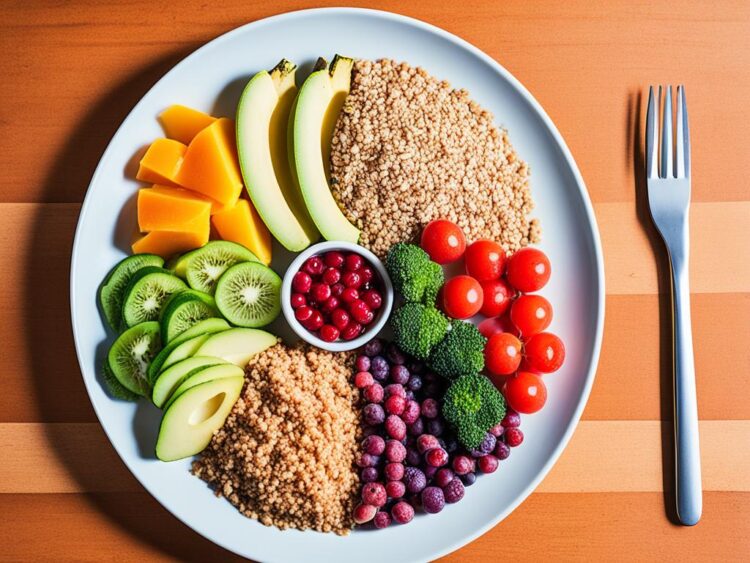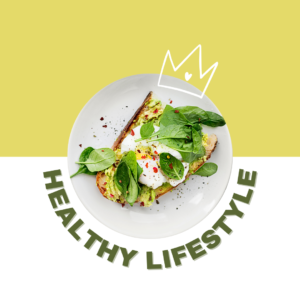Hello, my name is Jane and I'm here to help you trim your waist and reduce belly fat. Excess belly fat, especially visceral fat, can pose serious health risks, including an increased risk of diabetes and heart disease. It's important to note that body mass index (BMI) does not accurately measure belly fat, so focusing on targeted strategies is key. In this article, I'll share with you 18 effective tips to help you lose belly fat and achieve a healthier, slimmer waistline.
Key Takeaways:
- Include plenty of soluble fiber in your diet with sources like fruits, vegetables, legumes, oats, and barley.
- Avoid foods that contain trans fats, as they are linked to inflammation, heart disease, and abdominal fat gain.
- Moderate your alcohol intake to prevent excess fat storage in the belly area.
- Eat a high protein diet to increase fullness, boost metabolism, and reduce abdominal fat.
- Reduce stress levels through activities such as yoga or meditation to minimize cortisol production and prevent fat gain.
In the following sections, we will delve deeper into each of these strategies and provide you with practical tips and insights to help you achieve your belly fat reduction goals. Remember, with consistency and dedication, you can trim your waist and improve your overall health and well-being.
Eat Plenty of Soluble Fiber
When it comes to weight loss and reducing belly fat, one key component to incorporate into your diet is soluble fiber. Soluble fiber not only aids in digestion but also helps you feel full, making it an essential tool for achieving your weight loss goals.
Studies have shown that increasing your intake of soluble fiber can have a significant impact on belly fat reduction. In fact, increasing your soluble fiber intake by just 10 grams can decrease belly fat gain by 3.7% over a span of 5 years.
So, how can you incorporate more soluble fiber into your diet? Look no further than high fiber foods such as fruits, vegetables, legumes, oats, and barley. These foods are not only rich in soluble fiber but also packed with essential nutrients that support overall health.
To give you an idea, here's a breakdown of some high fiber foods that are excellent sources of soluble fiber:
| High Fiber Foods | Soluble Fiber Content (per 100g) |
|---|---|
| Apples | 1.2g |
| Carrots | 1.1g |
| Black beans | 7g |
| Oats | 1.7g |
| Barley | 3.5g |
Incorporating these high fiber foods into your daily meals not only provides your body with the necessary boost of soluble fiber but also contributes to a well-rounded, nutritious diet. So, start making conscious choices by adding more fruits, vegetables, legumes, oats, and barley to your plate!
No more excuses! By eating plenty of soluble fiber, you'll be supporting your weight loss journey and taking steps towards reducing that stubborn belly fat!
Avoid Foods That Contain Trans Fats
Trans fats are a type of unhealthy fat that can have detrimental effects on our health. Consuming trans fats has been linked to inflammation, heart disease, insulin resistance, and an increased risk of abdominal fat gain.
When we consume trans fats, they can lead to chronic inflammation in our bodies. This inflammation can contribute to the development of various health issues, including heart disease and insulin resistance. Inflammation is also a known factor in the accumulation of abdominal fat, which is particularly dangerous for our health.
One of the main sources of trans fats in our diet is partially hydrogenated fats. These fats are often found in processed foods like baked goods, snacks, and fried foods. It is important to read ingredient labels carefully and avoid products that contain partially hydrogenated fats.
To make healthier dietary choices, it is recommended to opt for sources of monounsaturated fats instead of trans fats. Monounsaturated fats, found in foods like nuts, avocados, and olive oil, have been shown to have beneficial effects on heart health and can help reduce abdominal fat.
The Dangers of High Trans Fat Diet
A high trans fat diet can have serious implications for our health. According to research, individuals who consume a diet high in trans fats may experience a 33% increase in abdominal fat compared to those who consume minimal trans fats.
In addition to abdominal fat gain, a high trans fat diet has been linked to an increased risk of heart disease. Trans fats can raise LDL cholesterol levels, decrease HDL cholesterol levels (the “good” cholesterol), and contribute to the formation of plaque in our arteries. This can lead to atherosclerosis and an increased risk of heart attacks and strokes.
Moreover, trans fats have been shown to increase insulin resistance in our bodies. Insulin resistance is a condition where our cells become less responsive to the hormone insulin, leading to elevated blood sugar levels. This can eventually result in the development of type 2 diabetes.
To protect our health and reduce the risk of these serious conditions, it is crucial to avoid foods that contain trans fats. By making conscious choices and opting for healthier alternatives, we can improve our overall well-being and reduce the negative impact of trans fats on our bodies.
Moderate Your Alcohol Intake
When it comes to belly fat and overall health, it's important to consider your alcohol consumption. Heavy alcohol consumption has been associated with increased belly fat and excess fat storage in the body. To maintain a healthy weight and reduce the risk of chronic conditions, it's recommended to moderate your alcohol use.
The Dietary Guidelines for Americans advise limiting alcohol intake to two drinks or fewer per day for men and one drink or fewer per day for women. This moderation helps minimize the negative effects that heavy alcohol consumption can have on your body.
The Impact of Heavy Alcohol Consumption on Belly Fat
Excessive alcohol consumption has been linked to increased belly fat and excess fat storage.
When you consume alcohol, your body prioritizes metabolizing the alcohol over other nutrients like carbohydrates and fats. As a result, the excess calories from alcohol are more likely to be stored as fat, especially in the abdominal area.
Furthermore, heavy alcohol consumption can disrupt hormone balance and lead to insulin resistance, making it easier for your body to store fat. This can contribute to the accumulation of belly fat over time.
Moderate Alcohol Consumption is Key
Limiting alcohol intake to two drinks or fewer per day for men and one drink or fewer per day for women is recommended.
By practicing drink moderation, you can help maintain a healthy weight and reduce the risk of excess fat storage. It's important to keep in mind that different types of alcoholic beverages can vary in calorie content and their impact on your health. Opting for lower-calorie options and spacing out your drinks can help you enjoy alcohol while minimizing its effects on belly fat accumulation.
Remember, moderation is key. If you choose to consume alcohol, do so in moderation as part of a balanced lifestyle. Incorporating healthy diet choices, regular exercise, and stress management techniques can further support your efforts to reduce belly fat and improve overall health.
‘
Drinks and their approximate calorie content:
| Type of Drink | Calories per Serving (Typical Values) |
|---|---|
| Beer (12 oz) | 150-200 calories |
| Red Wine (5 oz) | 125-150 calories |
| White Wine (5 oz) | 120-125 calories |
| Liquor (1.5 oz) | 90-120 calories |
| Mixed Drinks (1.5 oz liquor + mixer) | 150-250 calories |
| Straight Spirits (1.5 oz) | 97-124 calories |
These calorie values are approximate and can vary based on specific brands and ingredients used. It's always a good idea to check the labels or consult with a healthcare professional for more accurate information.
Eat a High Protein Diet
When it comes to weight management and achieving your desired physique, one key component that shouldn't be overlooked is your diet. Incorporating a high protein diet can have numerous benefits, ranging from improved satiety to increased metabolic rate.
Protein is known as the building block of life, and it plays a crucial role in various bodily functions. One significant advantage of a high protein diet is its ability to increase the production of the fullness hormone, which can help control cravings and reduce overall calorie intake.
In addition to curbing hunger, protein also has a thermogenic effect on the body, meaning that it requires more energy to digest compared to other macronutrients such as carbohydrates and fats. This increased metabolic rate can contribute to greater calorie burn throughout the day, supporting weight management efforts.
Furthermore, consuming adequate protein is essential for preserving and building lean muscle mass. When you lose weight, there is a risk of losing both fat and muscle. However, by incorporating a high protein diet, you can help retain muscle mass while losing body fat, promoting a more toned and sculpted appearance.
Research has also shown a correlation between higher protein intake and reduced abdominal fat. People who consume more protein tend to have less fat accumulation in the abdominal region, which is a common area of concern for many individuals.
There are several excellent sources of protein that you can incorporate into your diet. These include:
- Meat
- Fish
- Eggs
- Dairy products
- Whey protein
- Beans and legumes
By including these protein-rich foods in your meals and snacks, you can easily meet your daily protein requirements and reap the benefits of a high protein diet.
| Protein Source | Protein Content per 100g (grams) |
|---|---|
| Chicken breast (cooked) | 31g |
| Sockeye salmon (cooked) | 25g |
| Whole eggs | 13g |
| Greek yogurt (plain, non-fat) | 10g |
| Whey protein powder (vanilla) | 80g |
| Black beans (cooked) | 21g |
Reduce Your Stress Levels
Stress levels play a significant role in the accumulation of belly fat. When we experience stress, our bodies release cortisol, a stress hormone that can lead to increased appetite and storage of abdominal fat.
Research has shown that women with larger waistlines produce more cortisol in response to stress, further contributing to fat gain in the abdominal area.
Fortunately, there are effective ways to reduce stress and mitigate its impact on fat gain. Engaging in stress-relieving activities like yoga and meditation has been proven to be highly beneficial for reducing cortisol levels and promoting overall well-being.
“Yoga is the perfect way to unwind and calm your mind. Through gentle movements, deep breathing, and meditation, you can release tension and reduce stress levels. It's a powerful tool for managing cortisol and preventing abdominal fat storage.”
Similarly, meditation provides a focused and mindful approach to alleviating stress. By incorporating regular meditation practice into your daily routine, you can help regulate cortisol levels, which in turn aids in reducing belly fat.
Implementing stress reduction techniques like yoga and meditation not only improves your mental well-being but also contributes to a healthier body composition. Find time each day to prioritize self-care and make these stress-management practices an essential part of your routine.
Do Aerobic Exercise (Cardio)
Aerobic exercise is a key component in achieving weight loss and reducing belly fat. Whether you prefer moderate or high intensity exercise, engaging in regular aerobic workouts can help you reach your goals. The frequency and duration of your exercise sessions also play a crucial role in maximizing the benefits.
Research has shown that postmenopausal women who committed to 300 minutes of aerobic exercise per week were able to lose more overall body fat. However, it is important to note that changes in visceral belly fat were not significantly different between exercise groups.
This doesn't mean you should skip your aerobic workouts though! Regular aerobic exercise can still lead to reductions in belly fat, increase your metabolic rate, and improve overall cardiovascular health. Remember to find an exercise routine that you enjoy and stick to it, whether it's brisk walking, jogging, swimming, or cycling.
Integrating aerobic exercise into your weekly routine is a great way to promote weight loss and reduce belly fat. Aim for at least 150 minutes of moderate intensity exercise or 75 minutes of high intensity exercise per week. Combine this with a balanced diet and strength training for optimal results.
FAQ
How can I reduce belly fat?
There are several effective ways to reduce belly fat. You can incorporate belly fat burning exercises, follow a belly fat diet, and make lifestyle changes. Eating soluble fiber, avoiding trans fats, moderating alcohol intake, eating a high protein diet, reducing stress levels, and doing aerobic exercise can all help in reducing belly fat.
How does soluble fiber help in reducing belly fat?
Soluble fiber helps you feel full and may reduce belly fat. Increasing soluble fiber intake by 10 grams can decrease belly fat gain by 3.7% over 5 years. Excellent sources of soluble fiber include fruits, vegetables, legumes, oats, and barley. Including these foods in your diet can aid in belly fat reduction.
Why should I avoid foods that contain trans fats?
Trans fats are linked to inflammation, heart disease, insulin resistance, and abdominal fat gain. A high trans fat diet can increase abdominal fat by 33%. It is important to read ingredient labels and avoid products that contain trans fats. Instead, opt for foods with healthier fats like monounsaturated fats and avoid partially hydrogenated fats.
Is alcohol consumption related to belly fat?
Heavy alcohol consumption is associated with increased belly fat and excess fat storage. Limiting alcohol intake to two drinks or fewer per day for men and one drink or fewer per day for women is recommended by the Dietary Guidelines for Americans. Moderating your alcohol intake can contribute to belly fat reduction.
How does a high protein diet contribute to belly fat reduction?
High protein intake increases fullness, raises metabolic rate, and helps retain muscle mass during weight loss. People who eat more protein tend to have less abdominal fat. Good sources of protein include meat, fish, eggs, dairy, whey protein, and beans. Including these foods in your diet can aid in belly fat reduction.
Can stress levels affect belly fat?
Yes, stress triggers cortisol production, leading to increased appetite and abdominal fat storage. Women with a large waist produce more cortisol in response to stress, adding to fat gain. Engaging in stress-relieving activities like yoga or meditation can help reduce belly fat.
What role does aerobic exercise play in reducing belly fat?
Aerobic exercise is effective in reducing belly fat and overall body fat. It can be done at moderate or high intensity, and the frequency and duration of exercise are important. Postmenopausal women who did 300 minutes of aerobic exercise per week lost more fat overall. However, changes in visceral belly fat were not significantly different between exercise groups. Including aerobic exercise in your routine can contribute to belly fat reduction.





